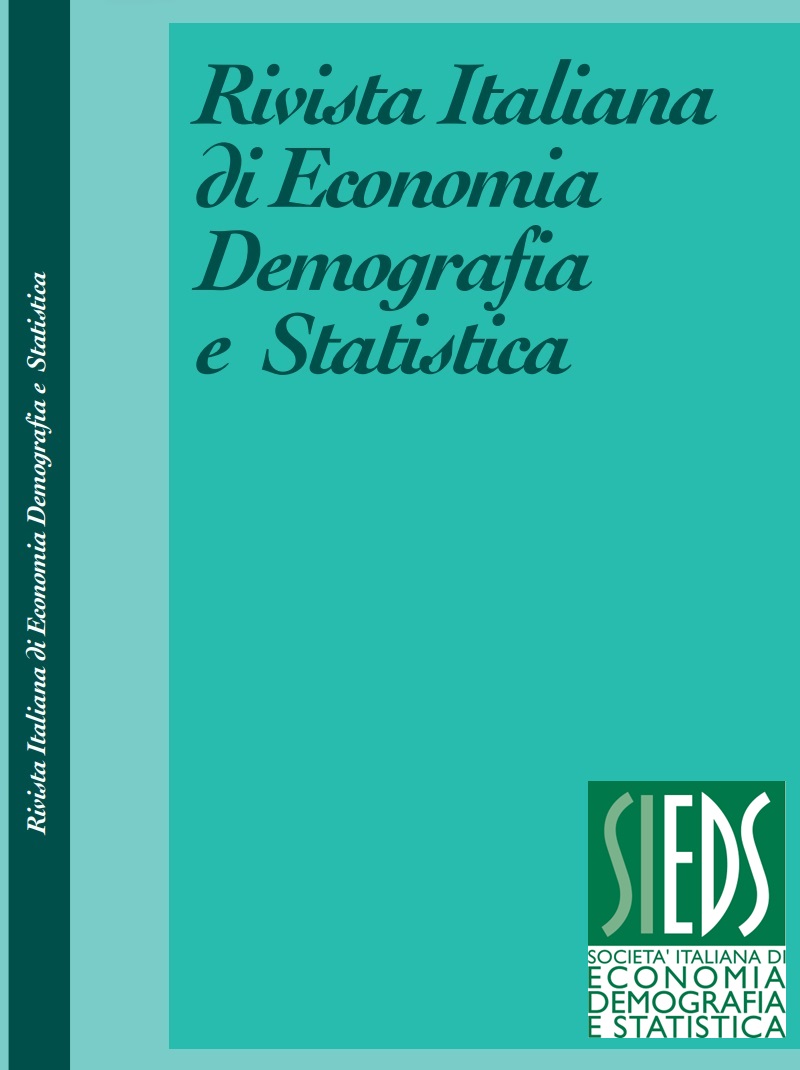A proposal for a composite index to measure distress in marginalized municipalities
DOI:
https://doi.org/10.71014/sieds.v79i4.315Keywords:
Composite index, INEQUALITYAbstract
Over the years, the scientific community has increasingly emphasized the need to adopt a multidimensional approach to analyse and measure inequalities. This approach recognizes that inequalities are complex and multifaceted phenomena, involving interconnected components that span various dimensions. In the context of the proposed study, thanks to the availability of results from the Permanent Census of Population and Housing and information derived from other Istat sources, comprehensive analyses have been conducted on all municipalities across the national territory, utilizing data collected in the year 2021. These insights covered a range of factors including territorial characteristics, environmental conditions, demographic dynamics, and socio-economic indicators. Additionally, specific attention has been directed towards gender disparities, with the inclusion of variables that shed light on differential experiences and opportunities among diverse groups. Furthermore, some indicators have been tailored to account specific age groups, such as young adults and the elderly. Finally, the composite index Adjusted Mazziotta-Pareto Index (AMPI) and the Chisquared Automatic Interaction Detector (CHAID) have been calculated.
Subsequently, the study has been focused on municipalities that can be considered more disadvantaged in terms of access to basic public services (Inner Areas), in order to determine if similar trends occur throughout the national territory or if belonging to certain geographical areas represents an additional penalizing factor.
References
DE MURO P., MAZZIOTTA M., PARETO A. 2011. Composite Indices of Development and Poverty: An Application to MDGs, Social Indicators Research, Vol. 104, pp. 1-18. DOI: https://doi.org/10.1007/s11205-010-9727-z
DIPARTIMENTO PER LO SVILUPPO E LA COESIONE ECONOMICA, 2014. Le aree interne: di quali territori parliamo? Nota esplicativa sul metodo di classificazione delle aree. Punto 5 della Nota del Ministro: Ma di quale territorio parliamo (agenziacoesione.gov.it).
EUROSTAT 2019 - Methodological manual on territorial typologies, 2018 edition. Luxembourg: Publications Office of the European Union.
ISTAT 2024. La demografia delle Aree Interne: dinamiche recenti e prospettive future. Statistiche focus. Roma: Istituto Nazionale di Statistica.
ISTAT 2022. La geografia delle aree interne nel 2020 - vasti territori tra potenzialità e debolezze. Statistiche focus. Roma: Istituto Nazionale di Statistica.
ISTAT 2020. Rapporto sul territorio. Roma: Istituto Nazionale di Statistica. doi 10.1481/Istat.Rapportoterritorio.2020.
KASS G.V. 1980. An Exploratory Technique for Investigating Large Quantities of Categorical Data. Journal of The Royal Statistical Society Series C-applied Statistics, Vol. 29, pp. 119-127. DOI: https://doi.org/10.2307/2986296
MAZZIOTTA M., PARETO A. 2016. On a Generalized Non-compensatory Composite Index for Measuring Socio-economic Phenomena. Social Indicators Research, Vol. 127 , No. 3, pp. 983-1003. DOI: https://doi.org/10.1007/s11205-015-0998-2
MAZZIOTTA M., PARETO A. 2013. Methods for Constructing Composite Indices: One for all or all for one. Rivista Italiana di Economia Demografia e Statistica Vol. LXVII , No. 2, pp. 67-80.
OECD. 2008. Handbook on Constructing Composite Indicators. Paris: OECD Publications.
Downloads
Published
Issue
Section
License
Copyright (c) 2025 Valeria Quondamstefano, Mariangela Verrascina

This work is licensed under a Creative Commons Attribution 4.0 International License.



